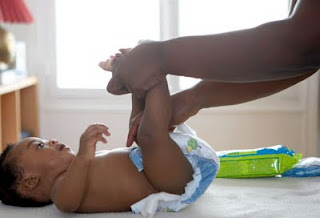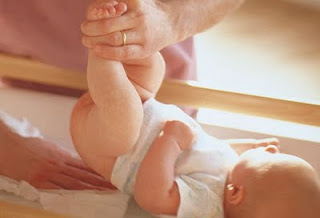Diaper Changing, Step-by-Step
Whether you've never changed a diaper before or you're an old hand, don't worry -- you'll get plenty of practice with your new baby. Most parents have made common mistakes, like putting a diaper on backward or lopsided, or even getting an unexpected spray of urine from their baby boy. So, you're not alone. These step-by-step tips will help you master the art of diaper changing and fix any first-time mistakes fast.
Watch Healthy Tips:
Get Your Supplies Together
Have everything at hand, because you never want to leave your baby unattended. You'll need: a clean diaper or two, something to wipe baby with, and a flat surface. If you use cloth diapers, you'll need a clean diaper cover or waterproof pants (and pins). If your baby has diaper rash or is less than a month old, have cotton balls or squares, warm water, and a towel handy.
Always Keep One Hand on Your Baby
Wash your hands and place your baby on the changing table or a flat surface. Use the safety straps, or make sure to keep one hand on the baby so he doesn't roll off. Never leave your baby unattended, even for a minute. If he wiggles a lot, distract him with a mobile or a brightly colored toy. Undo the dirty diaper, hold your baby's legs with one hand and use the other hand to pull down the front of the diaper. Don't remove it just yet.
Wipe From Front to Back
First, use the front part of the diaper to help wipe your baby -- wiping from front to back to avoid a urinary tract infection. Then use a mild wipe or wet washcloth to clean baby -- again wiping from front to back. For a newborn or baby with diaper rash, use cotton balls or squares and warm water. Pat baby's bottom dry. If you have a boy, keep a clean diaper over his penis while you're changing him so he doesn't urinate on you.
Swap Dirty Diaper for Clean One
Lift baby's legs and slide the dirty diaper out. Hold your baby's legs to keep him from touching the messy diaper. Slide a clean diaper underneath your baby. On a disposable diaper, the adhesive tabs go in back and should be about belly-button level. Pull the front up between baby's legs. For a boy, make sure his penis is pointing down so he doesn't pee out of the top of his diaper.
Use Your Fingers to Test the Fit
Close the tabs on a disposable diaper or pin the corners of a cloth diaper together. Make the diaper snug, but be sure you can place two fingers between the diaper and baby's waist. With a newborn, fold the top of the diaper down so that the umbilical stump is exposed. Or use a newborn diaper with a cutout for the stump.
You May Want to Flush the Poop
What do you do with the old diaper? With cloth diapers, shake any solid waste into the toilet before tossing into the diaper pail. Some parents do this with disposables, too. With a disposable, tape it up and put it in the trash or diaper pail. Some parents put them in a plastic bag or zipper-top bag first. For cloth diapers, store in a dry or wet diaper pail until ready to wash.
Take Your Time & Enjoy
Many moms and dads find that diaper changes are a great time to connect with their babies. After all, you're leaning over your baby, touching, and talking or cooing to him or her. Your baby is looking up at you and listening to your voice. Take some time to sing a song or play peek-a-boo. Although some diaper changes will have to be done quickly, when you have a few minutes, try to enjoy the ritual.
































